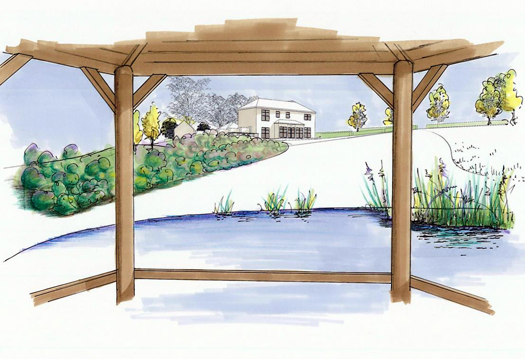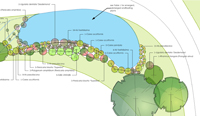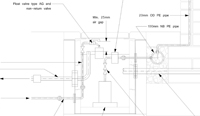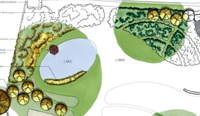Tel. +44 (0)1722 714443 Email: svend@rumbold-ayers.co.uk




Ponds and Water Management
The detailing of external systems such as rainwater harvesting, grey water recycling, drainage or water features may be conveniently addressed as part of the garden and landscape scope.
Water Features, Ponds and Natural Swimming Pools
Formal or informal ponds, and fountains or other water features, are popular and useful design features. However, designing, constructing and planting water features calls for a blend of good design – balanced and harmonious with the surrounding gardens and house – together with sound technical knowledge. A wildlife pond, optimised for invertebrates such as dragonflies and damselflies, can be an ecologically attractive feature, where space permits. A natural swimming pool is reliant on the purifying effect of the root systems of certain aquatic plant and does not need chlorination, so swimming is much more pleasant (and a natural pool will pick up quite a bit of solar heat, without being artificially heated).
Reed Beds
Reed beds provide an ideal medium for cleaning dirty water, where space is available, and can achieve a high discharge quality. They have the advantage of being aesthetically pleasing, very low maintenance, and providing an attractive habitat for invertebrates such as dragonflies and damselflies. A reed bed can be subtly integrated with ponds and other water features, mitigating the area needed. This provides a good opportunity for saving and storing “grey water” - wastewater from showers, baths, washbasins (and sometimes washing machines and kitchen sinks) – which can be reused once treated, either for garden irrigation or in the home. (Untreated grey water may be unsuitable for long term irrigation, depending on its source.) Reed beds also have an important role to play in attenuating storm water flows, as part of the drainage strategy on larger sites.
Water Conservation
Rainwater capture and storage is a straightforward way of reducing drinking water consumption, either for use in the home or for irrigation (although the water supply isn’t necessarily as reliable or consistent as grey water). The design, function and location of any rainwater harvesting system should ideally be considered early in the landscape design process, and the specification and installation may be usefully included within the landscape works scope, rather than being retrofitted at a later date.
Drainage
Many gardens, especially those on poor draining soil, suffer from waterlogging during wet winter periods. The problem is often made worse by recent construction work, where soil has been compacted by builders' vehicles. Aside from soil remediation, and assuming the cause is not attributable to a high water table, some form of drainage may be necessary. This can generally be routed to a suitably sized soak away (recent regulatory changes discourage discharge directly to watercourses). Consideration should also be given to drainage of paved areas such as patios and driveways.
Drainage design, and compliance with the SUDS regulations, is a standard consideration in our garden and landscape design process.
Please read our Privacy Statement
